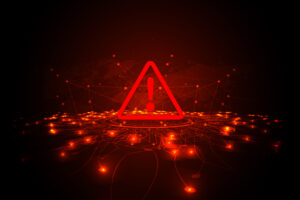2024 Cybersecurity Threat Landscape
The constant evolution of the digital landscape brings forth both opportunities and challenges. As we step into 2024, it’s imperative for organizations and individuals alike to stay vigilant and informed about the ever-shifting cybersecurity threat landscape.

Emerging Threats:
AI-Powered Attacks:
- Artificial intelligence (AI) has transcended its role in cybersecurity from a defender to a potential adversary. Cybercriminals are increasingly leveraging AI to enhance the sophistication of attacks, making them more adaptive and difficult to detect. From AI-driven phishing attacks to automated social engineering, organizations must fortify their defenses against these intelligent adversaries.
5G Vulnerabilities:
- The widespread adoption of 5G technology brings unprecedented connectivity and speed, but it also introduces new vulnerabilities. With the expanded attack surface, there’s an increased risk of exploiting 5G networks for malicious purposes. Securing the infrastructure and devices connected to 5G becomes paramount to prevent potential cyber threats.
Supply Chain Attacks:
- Cyber attackers are shifting their focus to the weakest link in the chain – the supply chain. Targeting software vendors, service providers, or third-party suppliers, hackers aim to infiltrate systems through trusted sources. Organizations must implement robust supply chain security measures, including thorough vetting and monitoring of third-party connections.

Attack Vectors:
Ransomware Continues to Surge:
- Ransomware attacks remain a persistent and growing threat. Cybercriminals are not only encrypting files but also adopting double-extortion tactics, threatening to leak sensitive data if ransom demands are not met. A proactive approach involving regular backups, employee training, and advanced endpoint protection is crucial to mitigate ransomware risks.
Cloud Security Challenges:
- With the widespread adoption of cloud services, attackers are homing in on misconfigurations and weak access controls within cloud environments. Organizations need to implement robust cloud security strategies, including continuous monitoring, encryption, and multi-factor authentication, to safeguard their data in the cloud.
IoT Exploitation:
- As the Internet of Things (IoT) ecosystem expands, so does the attack surface. Insecure IoT devices become attractive targets for cybercriminals aiming to compromise networks or launch large-scale DDoS attacks. Security measures, such as regular firmware updates and network segmentation, are essential to mitigate IoT-related threats.

Potential Vulnerabilities:
Human-Centric Risks:
- The human element remains a significant vulnerability. Phishing attacks, social engineering, and employee negligence can expose organizations to severe risks. Comprehensive cybersecurity training programs and awareness initiatives are essential to empower individuals to recognize and thwart potential threats.
Legacy System Risks:
- Outdated and unsupported systems present a persistent vulnerability. Attackers often exploit unpatched vulnerabilities in legacy systems. Organizations should prioritize the upgrading and patching of outdated infrastructure to minimize the risk of exploitation.
Critical Infrastructure Targeting:
- Nation-state actors and cybercriminals are increasingly targeting critical infrastructure, such as power grids and water supply systems. Strengthening the security of these essential services is paramount to prevent potential catastrophic consequences.
The 2024 cybersecurity threat landscape is characterized by its dynamic nature, with new challenges and risks emerging alongside technological advancements. Vigilance, education, and a proactive security posture are key to navigating these evolving threats successfully. Organizations and individuals must collaborate, staying informed and implementing robust cybersecurity measures to protect against the ever-present dangers in the digital world.

